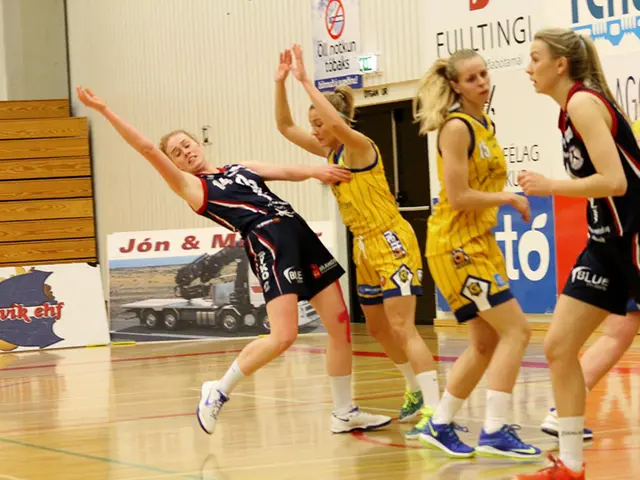Overseeing Project Procedures and Personnel: With Control Over Procedures and Teams
In today's competitive business landscape, the role and evolution of design management have become increasingly critical as companies recognise design as a strategic asset tied closely to user experience, strategic positioning, and innovation.
### The Role of Design Management in Business
Design management is a multifaceted field that oversees the design process and teams to ensure that products or services meet user needs while aligning with business goals. This role is particularly evident in the position of UX design managers, who coordinate UX designers and researchers to analyse user behaviour and craft solutions that improve usability and customer satisfaction. They manage teams, maintain design standards, and collaborate with departments such as product management, engineering, and marketing to create cohesive and effective user experiences.
### The Evolution and Strategic Importance of Design Management
Initially, design focused largely on aesthetics and functional usability of products. However, with the rise of flexible working methods and agile development, design has evolved into a more integrated, iterative process focused on continuous user feedback and experience improvements to delight users and solve real problems. Since around 2018, UI/UX design has rapidly developed into a central business discipline essential to success and innovation.
Businesses now view UX design as a strategic pillar for future-readiness, prioritising design principles early in product development to meet fast-evolving user expectations influenced by real-time data, AI, and automation.
### The Relationship between User Experience, Customer Experience, and Design Management
UX design focuses on optimising how users interact with specific products or digital interfaces, aiming to improve usability, reduce frustration, and enhance engagement. This is distinct but nested within the broader concept of Customer Experience (CX) design, which covers the entire customer journey across all touchpoints, both digital and physical, aiming to foster emotional connections and loyalty. Design management ensures that UX efforts align with wider CX goals, ensuring consistency and positive brand perception across all interactions.
### Design Management as a Driver of Strategic Positioning and Innovation
Design managers play a role in strategic planning, translating business goals and market research into actionable UX strategies. They prioritise projects, allocate resources efficiently, and align design outcomes with corporate objectives. Innovation is integral to modern UX, where personalisation, predictive analytics, AI-driven adaptive interfaces, and emerging technologies like AR play key roles in creating smarter, more intuitive, and personalised user experiences.
Examples include voice-first interfaces (e.g., Amazon Alexa) and AR-powered applications (e.g., IKEA’s furniture preview tool), which blend digital and physical ("phygital") experiences to enhance decision-making and engagement.
### Summary
The following table provides a summary of the key aspects of design management:
| Aspect | Description | |--------------------------------|-------------------------------------------------------------------------------------------------| | *Role of Design Management* | Oversees UX teams and processes, aligns design with business goals, manages resources and standards[1] | | *Evolution* | Moved from aesthetics to integrated, agile, data-driven user-centric design; essential for innovation[4][2] | | *User Experience (UX)* | Focus on product/interface usability and engagement, part of the broader customer experience[3] | | *Customer Experience (CX)* | Encompasses entire brand interaction journey, aims for emotional connection and loyalty[3] | | *Strategic Positioning* | Design aligns with business goals, shapes product-market fit, supports innovation and differentiation[1][2] | | *Innovation* | Leveraging AI, real-time data, AR, voice interfaces for personalised, adaptive, immersive UX[2] |
In conclusion, design management has evolved from a tactical function into a strategic driver that integrates user insights, business objectives, and cutting-edge technology to deliver innovative experiences, enhance competitive positioning, and foster customer loyalty. This evolution underscores its central role in modern business success.
[1] https://www.uxdesign.cc/the-role-of-ux-design-managers-and-how-they-impact-product-development-31c2e56a2f3 [2] https://www.nngroup.com/articles/ux-design-trends/ [3] https://www.uxdesign.cc/ux-design-vs-cx-design-what-is-the-difference-d7b61d96f79e [4] https://www.uxdesign.cc/the-future-of-ux-design-in-2021-and-beyond-537987825912
Service design and UX design are crucial components within the multidisciplinary field of design management, which oversees the product or service design process to cater to user needs and business objectives. UX design managers coordinate UX designers and researchers to enhance user experiences, while also collaborating with departments such as marketing and engineering.
Recent years have seen a strategic shift in the importance placed on design within the business world. UI/UX design has developed into a pivotal business discipline, essential for success and innovation. Businesses prioritize design principles early in product development to cater to fast-evolving user expectations influenced by emerging technologies like AI and automation.
Design management ensures that UX efforts are aligned with the broader customer experience (CX) goals, enhancing consistency and positive brand perception across all interactions.
Moreover, design managers serve as strategic planners, translating business objectives and market research into actionable UX strategies, prioritizing projects, allocating resources efficiently, and ensuring design outcomes support corporate objectives. Leveraging AI, real-time data, AR, voice interfaces, and other technologies, design management drives personalized, adaptive, immersive user experiences and fosters strategic positioning and innovation.




